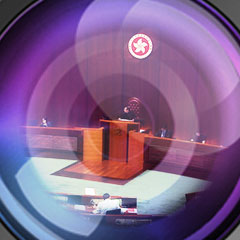21/06/2011
Analyze Sentence Structures in Manageable Units
A test on grammar
Identifying Sentence Errors is the only sub-section in the SAT which focuses largely on accuracy of grammar while little on effectiveness of expression. Students need to identify sentence-level grammatical errors. It does not test spelling or capitalization. The sentence contains either one error or no error at all. If the choice is the error, revising its underlined part will make the sentence correct.

Many students think the “no error” option makes the task much more challenging. Bear in mind that, out of the 18 questions of Identifying Sentence Errors, usually there are 3 or 4 sentences with “no error”. You would want to be careful whereas not wasting time on finding an error that does not exist. Read the whole sentence carefully but quickly, paying particular attention to see if any of the underlined choices A to D commits a sentence error listed below. If you think there is no error, double-check quickly whether each of the choices is correct to ensure you have not overlooked the error at the first glance.
Common grammatical errors
The following list covers more than 90% of the sentence errors in this SAT sub-section. Familiarizing with them will immensely facilitate your identification of sentence errors both in your SAT and your own writing. (I will discuss each of the errors in details in the coming articles.)

Analyzing complicated sentence structures
The difficulty of this sub-section lies in the fact that the sentences are complicated. The more challenging the questions, the more complicated and complex the sentence structures, formed of multiple distracters, additional phrases and subordinate clauses. For example, it is easy to identify the error in “The members has protested.” but difficult to do so in “The members of the green movement committee has protested against the removal of trees planted along the Southern Road.”, even though in both cases “have” should be used instead of “has”. Thus, if you can see long and complicated sentences as small manageable units of clauses and phrases, this sub-section will be easy.
The key is to learn how complicated sentences are built on simple grammatical elements. The simplest sentence is formed by one clause with a subject (S) and a verb (V) (The subject – “You” in an imperative statement such as “Go home” and “Sit down” is implied). Based on the SV, more complicated and complex sentences are constructed with additional words, phrases and SVs.

In attempting Identifying Sentence Errors, if you cannot locate the error at a first glance, break down the sentence into small units of clauses and phrases. Then, analyze how they relate to one another in a sentence.

Take any articles you are interested in and start practicing this structural analysis. Easy as it is, you will become much more sensitive to the syntactic structure of English sentences.
If you have any questions or enquires, feel free to visit my facebook page: www.facebook.com/allylo.english.
(Next Tue: Identifying Sentence Errors cont'd)
《經濟通》所刊的署名及/或不署名文章,相關內容屬作者個人意見,並不代表《經濟通》立場,《經濟通》所扮演的角色是提供一個自由言論平台。
【香港好去處】etnet全新頻道盛大推出!全港最齊盛事活動資訊盡在掌握!► 即睇
















































































































































